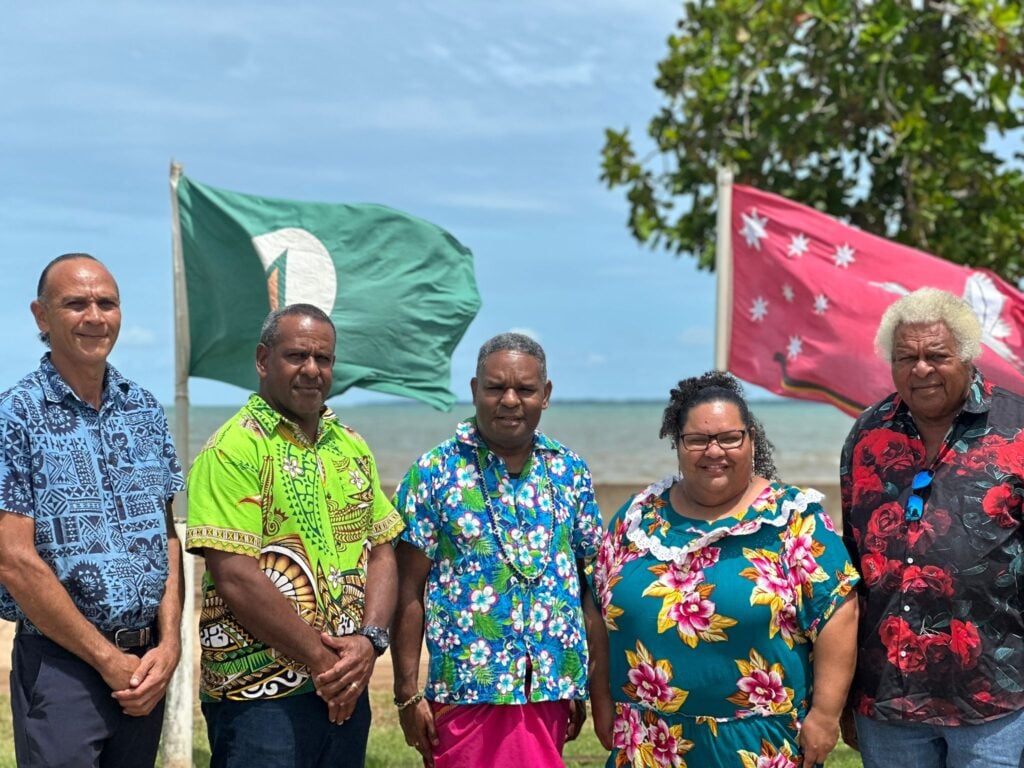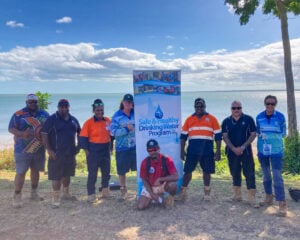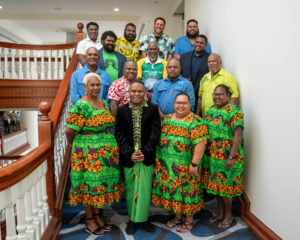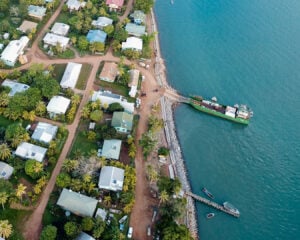TSIRC celebrates the 40th Anniversary of the Torres Strait Treaty on Sabai

Honouring Four Decades of Unity, Culture, and Cooperation
The Torres Strait Island Regional Council (TSIRC) proudly marked the 40th anniversary of the historic Torres Strait Treaty being entered into force with a special celebration on Saturday, February 15, 2025, at the Community Hall on Saibai Island.
This milestone commemorated four decades of a strong partnership between the traditional inhabitants of the Torres Strait Islands and the Papua New Guinea (PNG) Treaty Villages. Signed in December 1978 and entered into force in February 1985, the Torres Strait Treaty established key maritime boundaries, affirming the sovereignty of both nations, Australia and Papua New Guinea, while safeguarding the cultural, familial, and economic connections between their people.
The anniversary event was a vibrant testament to this enduring bond, featuring cultural performances that showcased the richness and diversity of the Torres Strait region. The highlight of the celebration was a mesmerising performance by Saibai Island’s Muyngu Koekaper Dance Team, renowned for their traditional dances. Delegations from neighbouring PNG Treaty Villages also joined the festivities, presenting performances that reflected the deep cultural ties shared across borders.
TSIRC Mayor, Phillemon Mosby, emphasised the significance of this occasion.
“The Torres Strait Treaty is more than an agreement – it is a living bridge that connects our communities across sovereign borders. For 40 years, it has ensured the preservation of our cultural traditions, economic ties, and family connections.”
“This anniversary is a powerful reminder of the Treaty’s role in fostering peaceful and respectful relations between Australia and Papua New Guinea,” Mayor Mosby said.
The event was made possible with support from the Torres Strait Treaty Liaison Office. TJ Oberleuter, Treaty Liaison Officer, travelled to Saibai to take part in the celebration, demonstrating his support and deep admiration of both the Torres Strait and PNG communities.
“I’m delighted to celebrate the 40th Anniversary of the entry into force of the Torres Strait Treaty on Saibai. The Treaty is a testament to the strong kinship and cultural connection between Australia’s Torres Strait region and Papua New Guinea. I thank the Torres Strait Island Regional Council and traditional inhabitants for their genuine partnership and collaboration across areas of the Treaty particularly with our agency partners”. – TJ Oberleuter, Treaty Liaison Officer, Department of Foreign Affairs and Trade(DFAT).
A Treaty of Cultural and Historical Significance
The shared history of the Torres Strait and PNG Treaty Villages predates colonial maps and written agreements. For generations, trade, kinship, and storytelling have bound these communities together. TSIRC remains committed to ensuring that younger generations continue to embrace and uphold these traditions, strengthening the cultural fabric of the region.
Marine Environment and Resource Protection
The Torres Strait is home to one of the world’s most biodiverse marine environments. Over the past four decades, significant progress has been made in conservation and sustainable fishing practices. However, new challenges—such as climate change, rising sea levels, and marine resource depletion—require renewed commitment. TSIRC is dedicated to ensuring that the waters of the Torres Strait remain abundant and protected for future generations.
Border Security and Strategic Planning
The Treaty has played a pivotal role in maintaining cooperative border security. However, emerging challenges, including illegal fishing, biosecurity threats, and economic vulnerabilities, necessitate a strengthened, ‘Whole-of-Government’ approach. TSIRC continues to work with local leaders and Australian and PNG authorities to safeguard the region while ensuring prosperity for all.
Government Commitment and Future Investment
TSIRC remains steadfast in advocating for increased infrastructure, education, and law enforcement support to enhance regional stability. Advances in digital tracking of Treaty movements and new training initiatives for local border security personnel will further empower communities to manage shared waters effectively.
As TSIRC reflects on four decades of cooperation, it also looks to the future. The Council calls upon all stakeholders, community leaders, government agencies, and regional partners, to uphold the spirit of the Treaty for generations to come.
“Let us continue to work together, as one people, to ensure the longevity of our shared customs, environment, and security.” Mayor Mosby stated.










